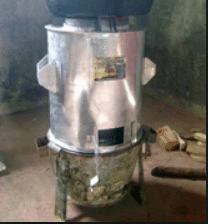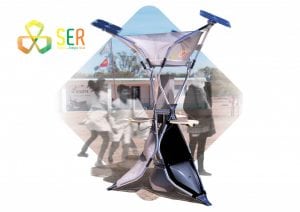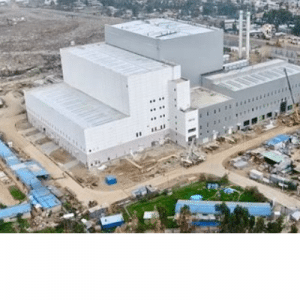
Agriculture
December 28, 2023
Wisdom Stoves MJ
Read SolutionImplemented by
Wisdom Stoves

Updated on November 19, 2024
·Created on August 24, 2017
The HoPE LVB Energy Efficient Stoves are smokeless and easy-to-build mud stoves, constructed by trained women and with locally available materials.
The HoPE LVB Energy Efficient Stoves are wood-burning stoves. They are mainly made of mud, with one fuel feeding port and the possibility to build it for up to two pans.
Compared to the three brick or stone traditional stoves used in the target communities, these models consume one-third less fuel. The stoves are constructed as a result of community involvement and women’s training process in Bussi Island (Uganda), Budondo in Luuka District (Uganda) and Kenya; Video of the HoPE LVB project in Bussi Island.
Target SDGs
SDG 7: Affordable and Clean Energy
SDG 3: Good Health and Well-Being
Market Suggested Retail Price
$5.56
Target Users (Target Impact Group)
Household, Community
Distributors / Implementing Organizations
Pathfinder International as leader of the HoPE-LVB Project since 2011, the project was primarily funded by various foundations and with technical support from two USAID-funded projects. The construction of the energy-saving stoves is promoted by locally trained women.
Competitive Landscape
Direct competitors include Eco Rocket Stove, IES 60 L Cookstove, and Kuniokoa Stove.
Countries
Kenya, Uganda
Manufacturing/Building Method
Self-constructed by end-users and trained women from the local communities.
Intellectural Property Type
Open-source
User Provision Model
HoPE-LVB trains women from target communities to build the stoves. They promote the construction of stoves in neighbouring communities by charging a fee to new users and augmenting their income. They are legally registered as Kyanjazi Environment Group and promote a multiplier effect of the energy-efficient stove project.
Distributions to Date Status
By June 2016, over 12,000 stoves had been constructed, and more than 5,575 households were using energy-saving stoves built with support from HoPE-LVB.
Fuel type
Firewood
Chimney (yes/no)
No
Forced or passive
Passive
Pot type
Flat bottom
Pot capacity (L)
Unknown
Thermal efficiency (%)
Unknown
PM emissions (g/MJ delivered to pot)
Unknown
CO emissions (g/MJ delivered to pot)
Unknown
Time to boil (min/L)
Unknown
Design Specifications
Design specifications include the body of the stove mainly made of mud, one fuel-feeding port and one or two holes for the pans.
Technical Support
Women from communities receive a full-training on how to build the stoves by HoPE-LVB.
Replacement Components
Households are expected to maintain their stoves by replacing the mud periodically.
Lifecycle
4 years
Manufacturer Specified Performance Parameters
The initial goal of HoPE-LVB project set in 2011 was to design and test a scalable model for promoting community strengthen and facility-based family planning services through maternal and child mortality prevention, environmental conservation with energy-efficient stove campaign, and environmentally sustainable livelihoods for broader economic development.
Vetted Performance Status
None
Safety
None
Complementary Technical Systems
Fuel and method to start fire
Academic Research and References
Bruce, Linda, 2013, “Developing Behavior Change Communication Interventions for Population, Health and Environment Projects: Facilitator Guide.” University of Rhode Island. Narragansett, RI.
HoPE-LVB Energy Efficient Stoves | AGLI. n.d. www.africangreatlakesinform.org.
Home. n.d. Pathfinder International.
Global Alliance for Clean Cookstoves. 2014. Review of HoPE LVB Energy Efficient Stoves. www.cleancookstoves.org. Global Alliance for Clean Cookstoves.
Margoluis, Cheryl Lynn, and Cara Honzak. 2018. Review of Creating Lasting Change – Case of HoPE-LVB Project (Sustainability Brief), January.
Compliance with regulations
None
Evaluation methods
None
Other Information
The following brief reflects on the project’s experience with sustainability, focusing on the institutionalization aspects of scale-up:
HoPE-LVB (2018). Creating lasting change: a case of the HoPE-LVB Project. Sustainability brief.
Further reports from HoPE-LVB can be found here.

Agriculture
December 28, 2023
Implemented by
Wisdom Stoves

Agriculture
February 29, 2024
Implemented by
Wheelchair of Hope

Agriculture
June 9, 2024
Implemented by
Turkcell

Agriculture
August 22, 2024
Implemented by
Farmers Hope

Agriculture
December 3, 2024
Implemented by
Gogle

Agriculture
January 12, 2024
Implemented by
Rural Spark

Agriculture
December 10, 2024
Implemented by
Box Synergy

Agriculture
January 21, 2024
Implemented by
Cambridge Industries Ltd.

Agriculture
December 18, 2024
Implemented by
SunCulture

Agriculture
November 7, 2018
Have thoughts on how we can improve?
Give Us Feedback